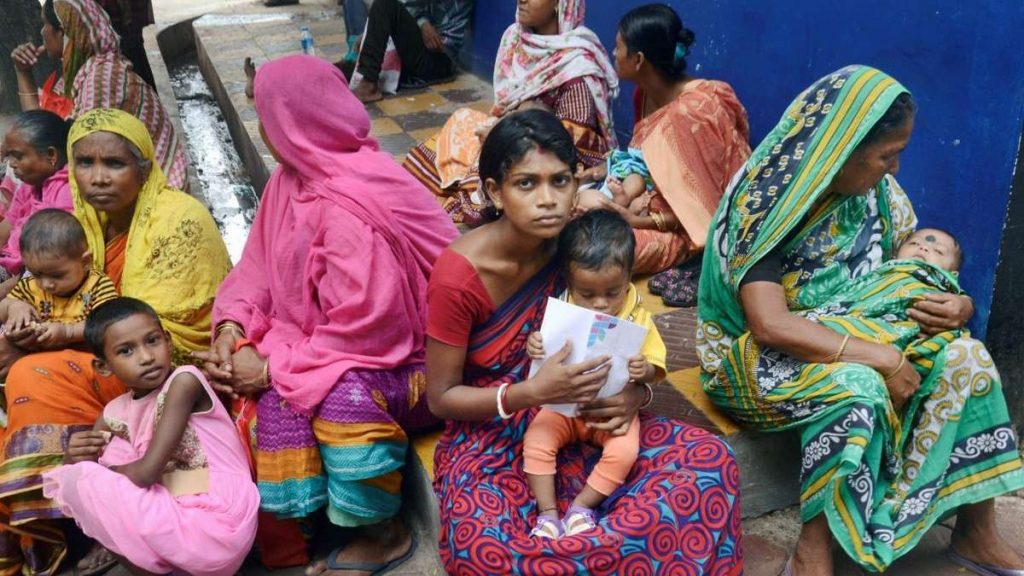Fiscal Consolidation Rules, A Health Emergency And a Free-falling Economy: How Can India Come Out of The Triple-Crisis?

– Jayati Gupta
While India’s fight with the COVID-19 pandemic- that has shattered the world economy and health systems- is quite recent, it has been grappling with economic stagflation for quite some time now.
In order to recover economic growth and demand, the Finance Ministry opted for an expansionary fiscal policy via the 2020-21 Budget. This breached India’s fiscal consolidation legislation: the Fiscal Responsibility and Budget Management Act, 2003. By invoking Section 4(2) of the aforementioned Act that provides for a trigger mechanism for deviation from the estimated fiscal deficit, the government of India increased its fiscal deficit to 3.8% of the Gross Domestic Product (GDP). However, soon the COVID-19 outbreak spread in India and exposed the loopholes of its staggering social sector, drowning the economy further.
The COVID-19 pandemic has impacted the Indian economy in four major ways: firstly, as external demand, i.e. exports have taken a hit, India’s trade deficit has worsened; secondly, domestic demand has decreased further- owing to lockdown restrictions on transport and production; thirdly, global supply chain disruptions mean India is unable to procure inputs for a variety of manufactured goods; and fourthly, disturbances in the financial markets have caused a collapse of the stock market. Like most countries, the Government of India too came out with a stimulus package in order to kickstart the economic revival post-COVID-19. However, the stimulus package amounts to a meagre 1% of India’s GDP.
This is where India stands to miss out on a chance to come out of the triple-crisis stronger and better. Traditionally, India spends about 1% of its GDP on its health. The proportion for the same in developed countries such as Germany and France is approximately 10%. It becomes clear with this comparison that under-spending on health systems has been the single-most crucial reason for India’s inefficiency in tackling the COVID-19 pandemic. India also faces a major challenge with respect to administrative autonomy of states. India is composed of large states that have disparities in climates and health sector needs. Furthermore, there are disparities in availability of resources and institutional capabilities which can be overcome by adopting heterogeneous regional policies rather than following a one-size-fits-all approach.
In order to combat the ongoing crisis, India undoubtedly needs to spend more on healthcare and allied sectors. Once the health emergency is stable, India may go on to combat the economic crisis next. The gaps in India’s health and social sector have been exposed: high dependency on China for medical equipment and pharmaceutical products, unregulated private healthcare systems, and extraordinary leakages in funding. India should now work to build core competency in health products, as well as monitor irregular and incomplete coverage of its health schemes.
Further, it would serve the policy-makers well to alleviate the concerns of the informal sector that forms the backbone of India’s economy. It is no surprise that countries that have fared well economically in the aftermath of the Global Financial Crisis of 2008-2009 were the ones that provided greater social protection to their citizens. Thus, labour reforms for the informal sector should focus less on formalising it and more on providing social protection. This encompasses provision of health insurance and health services to the informal sector. The Micro, Small and Medium Enterprises (MSME) sector has also been hard hit by the pandemic in India. By emphasising on this sector’s survival and growth, India may be able to decrease its dependence on China and reduce the fall in exports.
As the number of cases of the coronavirus continues to rise in India, it is extremely important for India to let go of its obsession to report small deviations from fiscal deficit and borrowings. The government of India had resorted to a counter-cyclical fiscal policy by increasing its fiscal deficit to as high as 6% in 2008-2009 to recover from the global economic downturn. The situation that the world is dealing with today is worse: it requires greater government intervention to augment public healthcare infrastructure, as well as to ensure livelihoods and undertake economic recovery. India needs a proactive and flexible fiscal policy today, with unambiguous rules for transition to ‘normal’ in the future, so as to ensure sustainable growth. It is necessary that India’s policymakers realise that public expenditure on raising capabilities is social investment, not social welfare. Keeping this in mind, the government may take steps to boost distance education programs, spread awareness about mental health, provide incentives to private corporations to undertake increased expenditure under their Corporate Social Responsibility (CSR) regimes, boost the productivity of the informal sector by adopting “inclusive growth” mechanisms, advance digital health platforms for its citizens while ensuring their right to privacy, and ensure affordable accessibility and availability of essential drugs and vaccines.
The current health emergency should take precedence over temporary high fiscal deficits. Thus, India should keep its concerns related to fiscal deficit aside for now and pay heed to tackling the COVID-19 and its impact. Necessary increases in public health expenditure will shield India against more severe economic downturns and health emergencies in the future.
This article is authored by Jayati Gupta. She is a student at Indian Institute of Management, Indore.